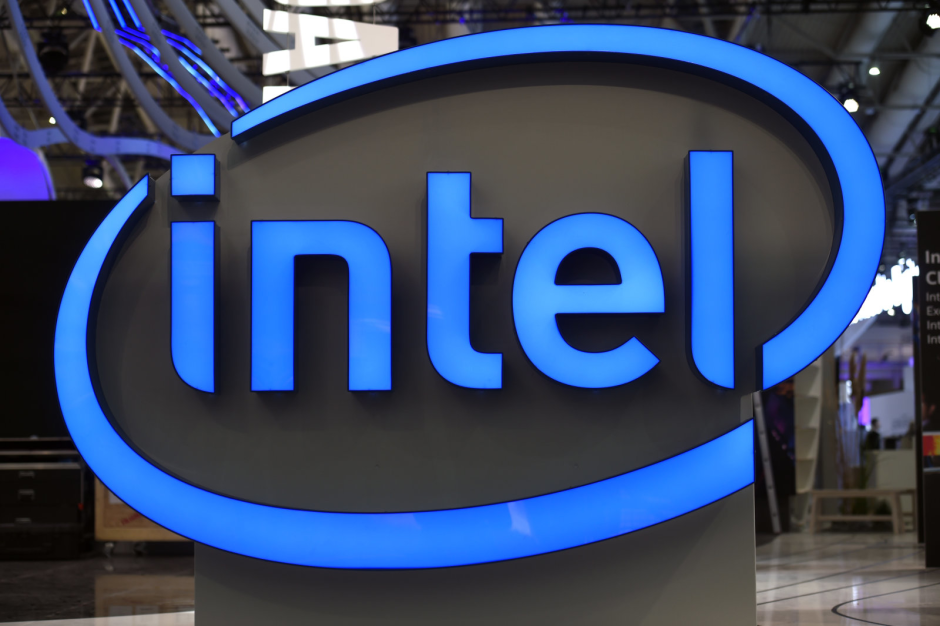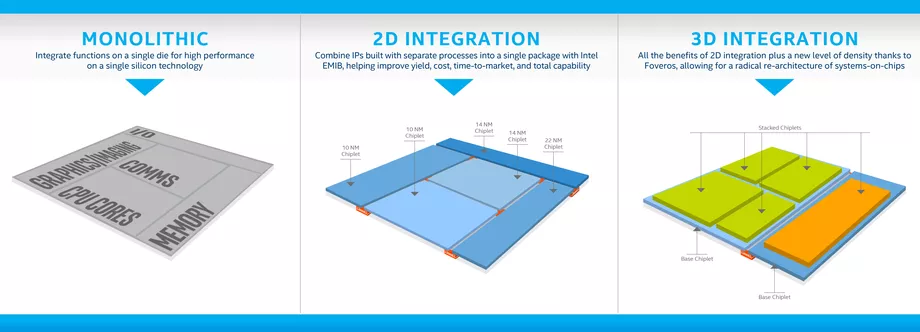Intel has announced a new technology for its processor lineup called Foveros (Greek for “awesome”). The idea is not new as companies have been working on it for decades and we have seen high bandwidth memories using 3D stacking, but this is the first time it’s been done for a processor.
Foveros solves the 10nm problem by stacking components on top of each other. The interesting thing here is that the stacked components don’t need to make using the same manufacturing process. For example, processors can now have parts made using 10nm process while other stacked parts can be made out of the 22nm process. So now, rather than just shrinking the die, which is an extremely difficult process, Intel can stack components on top of each other and get desired performance updates. We can’t expect to see Foveros based chips sometime in 2019.
The reveal comes in a time when chip designers like AMD, Nvidia, Qualcomm are gearing up for 7nm chip production. We have already seen 7nm chips in mobile phones and just last week Qualcomm took the wraps off of their 7nm chip, Snapdragon 855. Intel has been stuck on their 14nm process for years due to challenges with 10nm designs. There were even reports claiming that Intel might even forgo 10nm altogether. The rumors were later shot down by Intel when it said, “making good progress on 10nm.” Foveros should get Intel some breathing space as it tries to compete with various chip makers. Intel also talked about a new “hybrid x86 architecture” which uses 4 powerful cores and 4 efficiency cores. It is indeed quite similar to ARM’s big.LITTLE processor. Intel plans to use its hybrid x86 architecture to break into the always-connected PCs, space where Qualcomm has been gaining popularity. Intel confirmed that these designs will draw less than 7 watts and will be used in fanless devices.
Intel also talked about a new “hybrid x86 architecture” which uses 4 powerful cores and 4 efficiency cores. It is indeed quite similar to ARM’s big.LITTLE processor. Intel plans to use its hybrid x86 architecture to break into the always-connected PCs, space where Qualcomm has been gaining popularity. Intel confirmed that these designs will draw less than 7 watts and will be used in fanless devices.
 Intel also talked about a new “hybrid x86 architecture” which uses 4 powerful cores and 4 efficiency cores. It is indeed quite similar to ARM’s big.LITTLE processor. Intel plans to use its hybrid x86 architecture to break into the always-connected PCs, space where Qualcomm has been gaining popularity. Intel confirmed that these designs will draw less than 7 watts and will be used in fanless devices.
Intel also talked about a new “hybrid x86 architecture” which uses 4 powerful cores and 4 efficiency cores. It is indeed quite similar to ARM’s big.LITTLE processor. Intel plans to use its hybrid x86 architecture to break into the always-connected PCs, space where Qualcomm has been gaining popularity. Intel confirmed that these designs will draw less than 7 watts and will be used in fanless devices.













